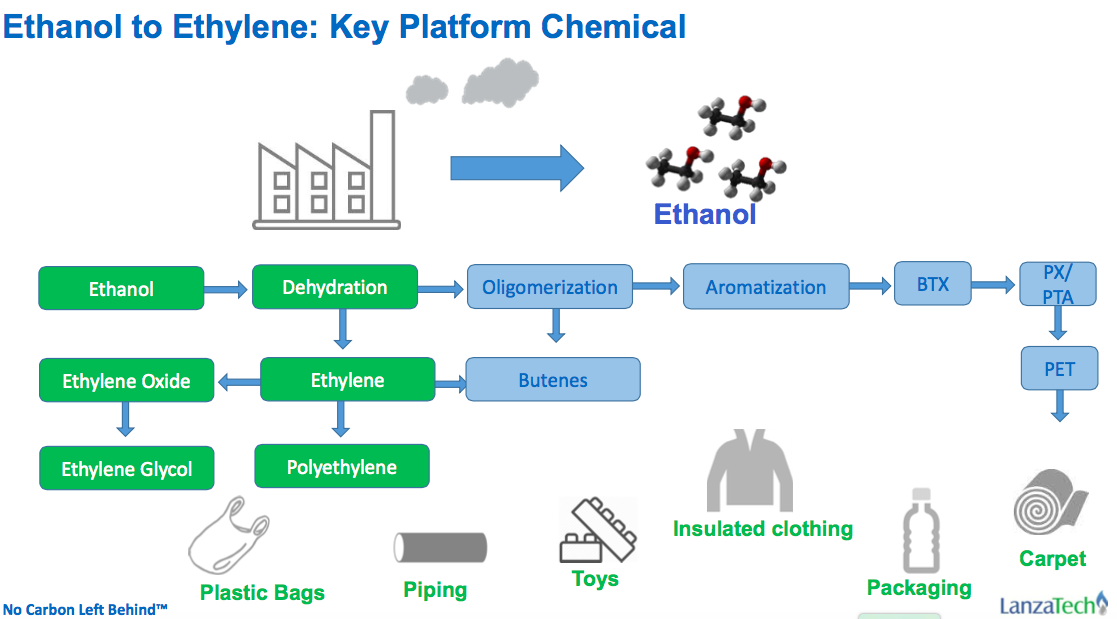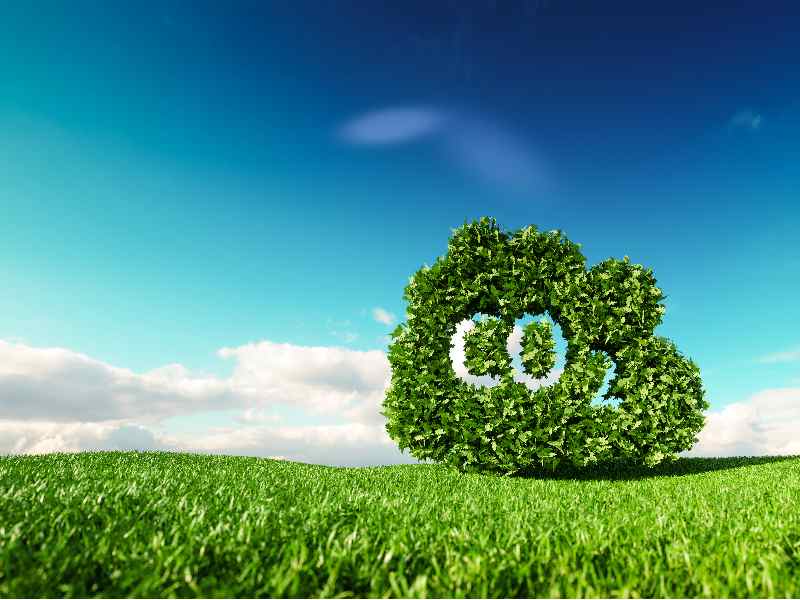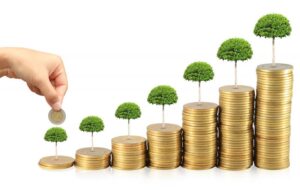The global average temperature is increasing to an unprecedented level. It will not take long before it reaches a temperature that would result to irreversible damages. The main culprit for this increase in temperature is carbon dioxide (CO2) emissions. As the amount of CO2 emitted into the atmosphere increase, climactic and weather problems become worse. Large-scale floods, increasing thickness of snowfall, and increasing rates of desertification are just some of these problems. Interestingly, there are ways to save the planet from this impending doom. Initiatives have already been underway to use carbon-free energy sources like solar energy and wind energy. However, these initiatives are still insufficient to effectively decrease the amount of CO2 that is emitted into the atmosphere. One of the most promising methods of decreasing CO2 pollution is CO2 recycling (Holmgren 15).
Recycling CO2 can be observed in nature through a process called photosynthesis. There are some technologies that can mimic such natural processes. Some of these technologies include: gas fermentation, direct air capture, beccs, afforestation, reforestation, biochar, soil carbon sequestration, blue carbon, enhanced weathering and habitat restoration. In gas fermentation, industrially produced CO2 is fed to a bioreactor which contains microorganisms that can convert the gas and other substrates into heavier hydrocarbons. The hydrocarbon products are then re-converted to fuels or polymers, depending on their molecular weights (Holmgren 17).

Some iron and steel manufacturing plants are also reducing their gas emissions through efficient Life Cycle Assessment (LCA) and Life Cycle Inventory (LCI). These two processes allow the maximization of energy resources thus reducing CO2 emission (Iosif et al. 1). If the LCA and LCI are efficient enough, the CO2 emission can be reduced to the level of CO2 emissions of solar and wind energy sources. Belgium, China, India, and South Africa are just some of the regions that implement LCA and LCI (Holmgren 20, 21). The CO2 emissions from these plants can further be recycled to form new fuels.
Biomass and Municipal Solid Waste (MSW) are also being utilized as fuels in order to reduce humanity’s reliance to fossil fuels. Japan and the state of California are pioneers of this initiative. MSW and biomass are converted to syngas or biofuel. Biomass can also be used as fuel as feed stock in diverse kinds of industrial plants. This method of CO2 reduction can also minimize water wastage and environmental footprint by 90%. Combined with other methods for generating alternative fuel sources, gas fermentation can account for 35% in fuel oil reduction the transportation sector, 75% in passenger cars, and 7% in CO2 Global reduction (Holmgren 24).
In some technologies, the products of gas fermentation can be converted to diesel, jet fuel, gasoline, and other chemicals through catalysis and separation procedures. One of the most popular ways of doing this is the ethanol to ethylene process. This process contains multiple steps which involves polymerization, catalysis, and fractional distillation (Fan, Dai, and Wu 101). There are diverse technologies that can be used to convert bio-ethanol to ethylene, Lanza Tech ATJ-SPK technology has the highest efficiency rate for medium to long sized ethylene hydrocarbons for such conversion at present. Note that ethylene based fuels are of high value for the aviation industry; hence, the Lanza Tech ATJ-SPK technology can be used to efficiently provide Sustainable Aviation Jet Fuel (SAJF) for the said industry. It is estimated that there must be a 34% increase in jet fuel consumption by 2040. This increase can easily be provided through the Lanza Tech ATJ-SPK technology. Note that this technology can also help reduce CO2 emissions from jet fuels by 50% by 2050 (Holmgren 28).
.


What is even more interesting about the Lanza Tech ATJ-SPK technology is that it can utilize different kinds of feedstock. Accordingly, it can utilize carbon monoxide (CO) and hydrogen gas (H2), in addition to CO2. This technology can be used in tandem with renewable energy technologies in order to provide all the feedstock needed. Solar and wind energy technologies, for example, can efficiently provide H2, which can then be combined with carbon-based gases like CO and CO2 into the Lanza Tech ATJ-SPK system to produce different kinds of fuels. The system can perform different sorts of functions to yield the desired fuel because it contains natural and engineered microorganisms that can produce different kinds of fuels as their by-products or wastes (Holmgren 32).
It should be noted that the Lanza Tech ATJ-SPK technology can produce fifty (50) types of fuels using its current strains of genetically engineered microorganisms. This means that a single strain can already produce different kinds of fuels. Among the fuels that the technology can produce acetone and isopropyl alcohol are the most abundant products. These two products can still be made to undergo diverse chemical processes to yield other fuel products (Holmgren 35).

At present, miniaturization efforts are underway so that carbon recycling can be done whenever and wherever individuals want to recycle. The miniaturized recycling plants are so small that they can be hand carried. These kinds of technologies, even their miniaturized versions, are derived from naturally observed processes like photosynthetic bacteria and algae. It should be noted, however, that the existence of such technologies is not enough to make sure that global problems like global warming can be mitigated. Innovation, strong political will and strict regulation are still needed to make all efforts to save planet earth and all of humanity work.

Work Cited

Fan, Denise, Der-Jong Dai, and Wu Ho-Shing. “Ethylene Formation by Catalytic Dehydration of Ethanol with Industrial Considerations.” Materials, 6.1(2013): 101-115.

Holmgren, Jennifer. “No Carbon Left Behind.” LanzaTech. 2018. AIChE Spring meetings

Iosif, Ana-Maria, et al. “Reduction of CO2 emissions in the steel industry based on LCA methodology.” 2009. https://pdfs.semanticscholar.org/169e/ed55f9f611aada289c75044a812cc45ae10b.pdf. Accessed 21 May 2018.





1 فكرة عن “No Carbon Left Behind By Ammar Bakheet”
Very Good Article
please keep posting such an article